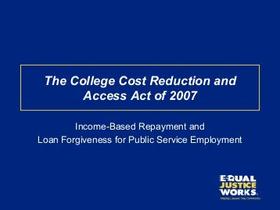Stackable Credentials: How Community Colleges Help Students Advance Their Careers
In today’s evolving workforce landscape, traditional degree-only paths no longer serve all learners or employers. For many students seeking speed and flexibility, stackable credentials offered through community colleges are emerging as a powerful route to career advancement. This article explores how these tiered credentials work, why they matter in 2025, and how students, parents, and educators should evaluate them.
What Are Stackable Credentials?
A “stackable credential” is a sequential set of educational awards—such as certificates, diplomas, associate degrees—that build on each other toward higher qualifications and improved job prospects. In the context of a community college, this might mean a student earns a short-term certificate, then adds a technical certificate or diploma, and finally stacks those into an associate degree (or transfers to a bachelor’s program).
According to one institution, “You can earn each one by one while pursuing your degree… it’s like collecting a series of building blocks that lead to something bigger.”
Why the Rise of Stackable Credentials?
Several trends make the stackable-credential pathway particularly relevant in 2025:
Faster entry into the workforce – Shorter credentials allow learners to gain employable skills sooner.Edalex
Career mobility and upskilling – Learners can start working, then return to the same institution to “stack” additional credentials and move up.
Flexibility for non-traditional learners – Working adults, parents, and career-changers benefit from modular credentials that do not require full-time study of 4 years.
Alignment with employer needs – Community colleges increasingly partner with industry to ensure certificate programs lead to in-demand skills.
How It Works at Community Colleges
Here is a simplified progression often used by community colleges:
| Stage | Credential Type | Typical Duration | Purpose |
|---|---|---|---|
| Level 1 | Short-term certificate (e.g., 3–9 months) | <1 year | Entry-level job qualification |
| Level 2 | Technical certificate or diploma | 1–2 years | Intermediate role, builds on Level 1 |
| Level 3 | Associate degree | 2 years | Higher-skill job or transfer to bachelor’s |
| Level 4 (optional) | Bachelor’s and beyond | 4+ years | Advanced career or leadership role |
As one college explains: “Earn your first certificate, start work, stack your credits into a technical certificate, then stack into an associate degree.”
Example
Suppose a student enrolls in a cloud-technology track at a community college:
First six months: earn a certificate (Cloud Systems Administration)
12 months: complete technical certificate (Cloud Technologies)
24 months: finish Associate of Applied Science in Cloud Technologies
Then optionally transfer to a bachelor’s.
This step-by-step model allows students to “get paid while they learn,” stacking credentials as they gain experience and education.
Evidence of Career Impact
Research indicates measurable benefits for students who stack credentials:
A study of adults in the University of Virginia system found that individuals returning to community colleges to complete additional credentials saw a 7 % increase in quarterly wages and a 4 percentage-point higher employment rate compared to peers who did not complete a second credential.
An article in Inside Higher Ed (August 2023) reports that “individuals are stacking credentials at increasing rates and seeing earnings gains.”Inside Higher Ed
These findings support the notion that stackable credentials can deliver meaningful labor-market returns—especially when aligned with high-demand fields.
Benefits for Students, Parents, and Educators
For Students:
Achieve early wins—earn certifications quickly and enter the workforce
Build flexibility—work, pause, and return to stack additional credentials
Reduce financial risk—credential steps spread out cost and time
Transfer options—stack into associate or beyond when ready
For Parents:
Clear milestone-based path for children, not just “a 4-year gamble”
Better alignment with career outcomes and real-world jobs
Opportunity for adult learners / second-career parents to upskill
For Educators and Institutions:
Strengthened ties with local employers ensures credential relevance
Improved retention—students see progress early and stay motivated
Lifelong-learning model supports continuous upskilling
Key Considerations and Best Practices
To maximise the value of stackable credentials, students and schools should heed the following:
Transferability matters: Ensure credits earned in certificates stack into the next level without loss.Edalex
Alignment with industry: Credentials should reflect real job-market demand; employer input is critical.
Clear roadmap: Institutions must provide advising and transparent pathways from one credential to the next.
Affordability and access: Cost, scheduling flexibility, online options, and student support are vital for non-traditional learners.
Avoid dead-end credentials: Some credentials may not stack or provide employment value—research them carefully.
Emerging Trends in 2025
Micro-credentials and digital badges: Many community colleges are introducing micro-credentials that stack into certificates or degrees, allowing ultra-short entry points.hurix.com
Hybrid/online models: Post-pandemic, community colleges are expanding online and hybrid offerings that widen access.
Employer-sponsored stacking: More firms are funding credential steps for their employees as part of workforce development.
Increased state policy support: Governments are encouraging stackable pathways via funding and strategic frameworks.
Case Study: From Entry Certificate to Associate Degree
Consider a student seeking a career in advanced manufacturing at a community college:
Earn a Certificate of Specialization in CNC operation (~9 months)
After working for a year, return to complete a Technical Certificate including automation and quality-control (~1 year)
Stack into an Associate of Applied Science in Manufacturing Technology (~2 years)
Optionally transfer into a bachelor’s in engineering or industrial management
Each credential offered entry into the workforce, advancement opportunities, and layered progression toward higher pay.
Conclusion
Stackable credentials provide a potent bridge between education and employment. For community colleges, they represent a forward-looking model enabling learners to gain credentials, work, upskill, and stack their way into advanced roles. For students, parents, and educators in 2025, understanding how these pathways function is essential to making informed decisions in an increasingly complex higher education landscape. Institutions that clearly map stacking paths, align credentials with employer needs, and support students from Level 1 through to the next credential will deliver real value, flexibility, and mobility.












